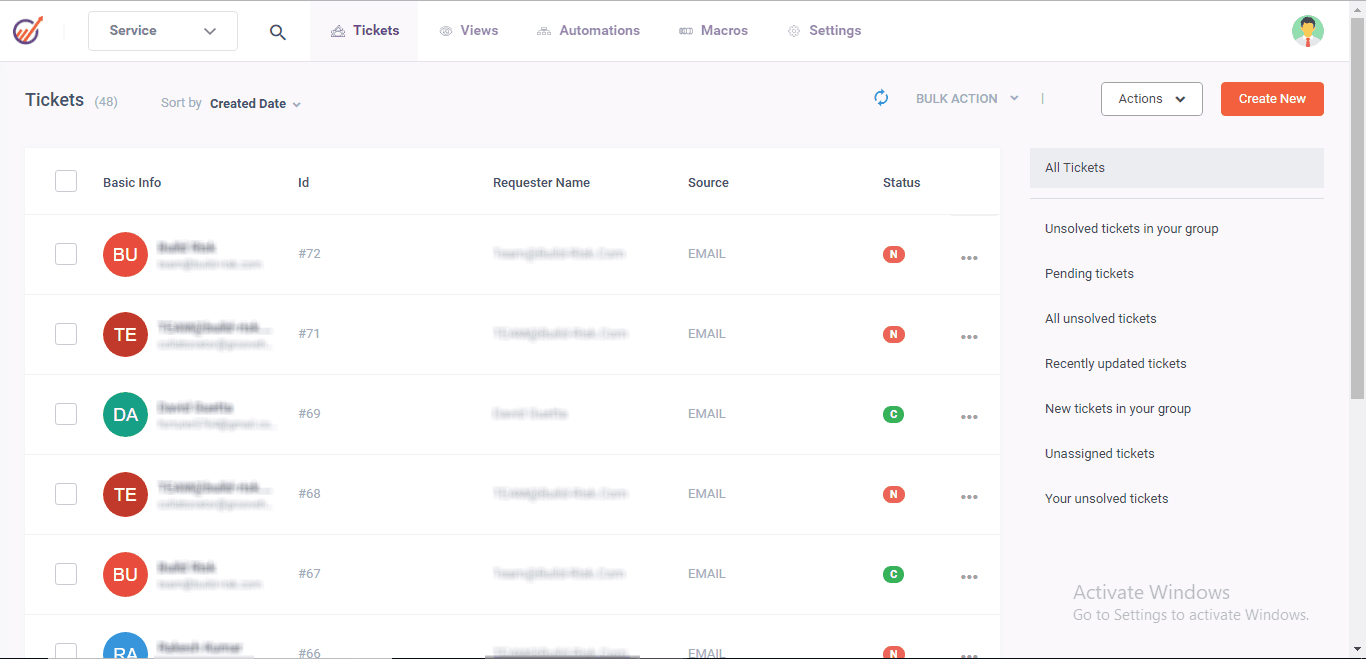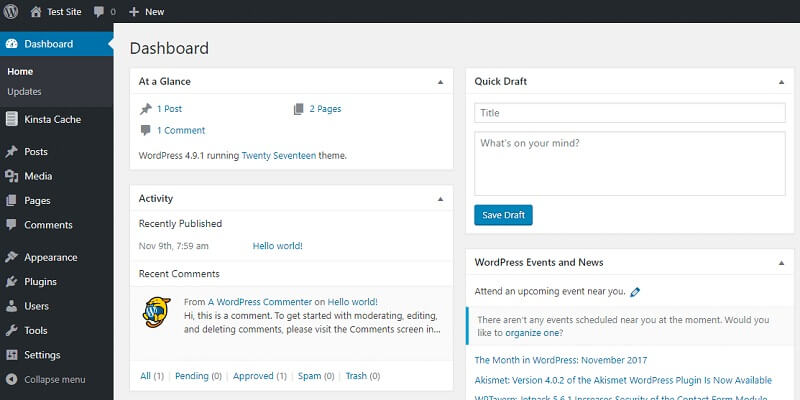Maintaining code quality is crucial in software development. Testing the code is a shared job between a developer and a tester. However, unit testing is the developer’s responsibility to confirm that the code they are writing works flawlessly at the component level. In 2025, automation testing has become the norm in the software industry, and choosing the suited unit testing frameworks has become a vital decision for developers. It allows for faster and more reliable testing processes.
To automate unit testing, developers require reliable and secure frameworks that efficiently test all web application components. Unit testing frameworks are in high demand in the IT industry. A framework refers to the library or software tool that delivers a structured environment for writing, managing, and executing unit tests in software development. In a similar vein, ensuring secure transactions the imperative of strong customer authentication in e-commerce highlights the importance of robust systems that protect users and maintain trust, just as unit testing ensures reliable and secure software functionality. Different unit testing frameworks allow developers to write test scripts in their preferred language.
This article will discuss a few unit testing frameworks in 2024 based on their features, functionality, and popularity.
Best Unit Testing Frameworks:
TestNG
TestNG encompasses various testing categories, such as functional, unit, end-to-end, and integration testing. Its design aims to address the limitations found in JUnit.
The tool boasts enhanced robustness and reliability compared to JUnit. It equips developers with various functionalities, including grouping, sequencing, and parameterizing, thereby enabling the creation of highly flexible test cases. This tool enhances efficiency and effectiveness in testing procedures by addressing JUnit’s limitations and streamlining the process of automating unit tests. Just as the future of marketing AI and automation is shaping how businesses optimize campaigns and workflows, advanced testing tools are transforming software development by making processes smarter, faster, and more reliable. Its diverse feature set and capabilities have made it a favored option for test automation and management within the development community.
A few pivotal features of TestNG are:
- Allows developers to execute parallel tests across different code snippets
- Set priorities for the unit testing by parameterizing the data or utilizing annotations
- Generating HTML reports while running test cases
- Grouping test cases as per the requirements
- Data-driven testing is supported by using the data providers
JUnit
JUnit is a widely utilized open-source testing framework designed for Java programming. Its primary purpose is to facilitate the creation and execution of unit tests to ensure the precision and reliability of web applications. For developers looking to expand their skills beyond Java, exploring free JavaScript books can provide valuable insights and resources to strengthen their web development expertise.
While JUnit 4 has been a popular version for an extended period, the introduction of JUnit 5 brought about substantial enhancements and modifications. These include a more adaptable architecture, augmented support for parameterized tests, and increased extensibility. Similarly, mastering the art of cloud architecture training for creativity and efficiency equips professionals to design scalable, innovative, and effective solutions in modern cloud environments.
JUnit 5 provides numerous advantages, including a modular and extensible architecture, enhanced test nesting, parameterized tests, and improved assertions. Developers should allocate time towards familiarizing themselves with the new functionalities and to assess compatibility with current projects and tools before transitioning from JUnit 4. Effectively managing IT projects using IT project management principles ensures that the adoption of JUnit 5 and other modern tools is smooth, organized, and aligned with overall project goals.
A few pivotal features of JUnit are:
- Read and organize tests better with nested test classes and practices.
- JUnit 5’s modular structure allows you to use what is needed, keeping the tests efficient.
- Improved assertion library for more readable tests.
- Run large test suites competently on multi-core systems.
- Write concise, definitive test code with Java 8’s lambdas.
- Add extra features such as hooks, reporting, and dependency injection by a flexible extension model.
- Test with various inputs utilizing parameterized tests, diminishing code duplication.
Selenide
Selenide is a popular Java testing framework commonly utilized in conjunction with Selenium WebDriver to enhance the functionalities of WebDriver and JUnit. It is an effective tool for developing accurate, comprehensible, and reliable test cases for Java applications’ user interfaces. For developers exploring front end development a comprehensive guide to building modern web interfaces, Selenide provides practical insights into testing and ensuring high-quality, user-friendly interfaces.
WebDriver is widely recognized for its effectiveness in UI testing. However, it has no native capability to handle timeouts efficiently, particularly when testing dynamic web technologies such as Ajax. The Selenide framework effectively addresses these challenges, providing a seamless solution. Its installation is straightforward, and the learning curve is minimal. For professionals looking to expand their skills in AI and automation, exploring the best machine learning courses can complement expertise in tools like Selenide, enhancing their ability to develop intelligent, efficient testing solutions. By leveraging Selenide, testers can focus on refining the logic of their tests while the framework manages the underlying complexities.
A few advantages of Selenide are:
- Effectively solves most Ajax/timing issues, ensuring accurate and reliable tests.
- Eliminates the need for numerous intricate commands in traditional Selenium tools, making the automation testing workflow more efficient.
- Supports testing applications developed utilizing AngularJS.
- Simplifies the process of writing test cases, facilitating timeout issues.
Serenity
Serenity is a testing framework developed as an open-source solution designed to integrate with well-known Java testing frameworks such as JUnit and TestNG. It offers advanced capabilities that aid in developing robust and articulate automated tests, promoting maintainability and reliability. In a similar way, understanding the top social media platforms to help promote your brand can empower businesses to reach wider audiences effectively, just as Serenity empowers developers to create more efficient and reliable testing processes.
This framework allows users to generate comprehensive testing reports, including descriptive elements. Furthermore, it provides the capability to align automated testing with specific requirements.
A few pivotal features of Serenity are:
- The active community furnishes support, documentation, and tutorials.
- Encourages BDD for natural language-style tests.
- Supports testing with multiple datasets
- Offers flexibility through extensions, configuration, and plugins.
- Enhances efficiency and provides parallel test execution support.
- Seamlessly integrates with Cucumber and Selenium WebDriver.
- Excels in web application testing, supporting the POM pattern.
- Easy-to-understand test reports for adequate communication.
Jest
Jest is an open-source JavaScript testing framework maintained by Facebook, which is widely preferred by developers for conducting JavaScript unit testing. Although Jest can handle various types of testing, such as unit, functional, end-to-end, and integration testing, it is commonly utilized for automating unit tests. Notably, Jest stands out for its user-friendly testing environment, eliminating the need for intricate configurations. Similarly, following tips to secure your VPS hosting environment ensures that your development and deployment processes remain safe, reliable, and protected from potential security threats.
Jest is commonly utilized across various applications, with a notable presence in React and ReactJS-based platforms. Its intuitive and simple interface enhances its appeal, enabling developers to execute unit testing procedures efficiently.
A few pivotal features of Jest are:
- Furnish standard syntax with documentation support.
- With zero configuration, it works out of the box on every JavaScript project.
- Ideal for ReactJS, React, VueJS, NodeJS, and Babel-based projects.
- The Snapshot feature permits you to keep track of extensive objects with ease.
Mocha
Mocha stands out as a widely favored JavaScript testing framework known for its flexibility and compatibility with various libraries. It is a preferred choice among developers due to its versatility and seamless integration with complementary tools such as Chai for assertions and Sinon for mocking and stubbing functions.
The framework is recognized for its advanced asynchronous test execution capabilities, which enable it to effectively manage concurrent tasks. It utilizes the Chrome V8 engine or other compatible web browsers to achieve this functionality, positioning it as a robust and premier unit testing framework. Its adeptness in supporting asynchronous testing scenarios has garnered high esteem among JavaScript developers for diverse testing needs.
A few prominent features of Mocha re:
- Can test the application’s front-end and back-end components.
- Supports testing in any browser, like the headless Chrome library, guaranteeing compatibility across different environments.
- Provides a clean foundation that permits developers to write tests according to their convenience and preferences.
- Includes built-in support for the NodeJS debugger, making debugging tests and identifying issues effortless.
Jasmine
Jasmine is a highly regarded open-source JavaScript testing framework that provides comprehensive support for BDD, a methodology emphasizing thorough unit testing of all code components. This practice enables developers to produce meticulously tested and well-documented code.
This framework is utilized for front-end testing, encompassing activities such as assessing the responsiveness and visual presentation of a web application’s user interface across different devices and screen sizes. Additionally, it serves as a proficient Selenium JavaScript framework for streamlining unit testing automation processes.
A few vital features of Jasmine are:
- Available with significant documentation and community support.
- Offers a straightforward, small, and clean syntax for easy web app testing.
- Does not require any document object model.
- Provides comprehensive support for testing front-end and back-end components.
Puppeteer
Puppeteer, a framework developed by a team at Google, is a highly effective tool for conducting tests. It provides a specialized Chrome API that seamlessly integrates with NodeJS applications. Primarily utilized for web browser-related functions, Puppeteer excels in tasks such as evaluating web page structures, generating screenshots, and capturing pre-rendered content in single-page applications. Similarly, understanding how to test a candidates excel sheets skills using an assessment test ensures that hiring managers can accurately evaluate proficiency and make informed recruitment decisions.
A few vital features of Puppeteer are:
- Supports ES6 functionalities like await and async.
- Can set browser resolutions and sizes.
- Supports automation for tasks, such as testing the user interface, submitting forms, and simulating keyboard inputs.
- Permits to test Chrome extensions.
ChaiJS
The ChaiJS framework is specifically engineered for behavior-driven testing in JavaScript. Its notable strength lies in its adaptability, which allows for seamless integration with a wide range of other testing frameworks. With a well-established presence in the JavaScript ecosystem, ChaiJS has consistently evolved to align with the changing standards in JavaScript development.
The framework demonstrates compatibility across multiple environments, including Node.js, web browsers, and Rails, rendering it versatile for various projects. It is supported by an engaged and supportive developer community, offering extensive documentation to aid users in efficiently integrating and utilizing the framework for their testing requirements.
A few vital features of ChaiJS are:
- Follows the BDD approach, authorizing developers to write tests in a human-readable format.
- Used for both server-side and browser-based testing.
- Provides a rich set of assertion styles and plugins, permitting developers to extend its functionality according to their specific testing needs.
Pytest
Pytest is a versatile automation testing framework suitable for various software testing scenarios. In addition to its status as an open-source unit test framework, Pytest offers a user-friendly interface that facilitates its adoption and integration into various testing projects.
A few vital features of Pytest are:
- Permits developers to write test cases compactly.
- Execute parallel testing efficiently with the pytest-xdist.
- With its multiple fixtures, developers can cover all the parameter combinations without rewriting the test cases.
- Store all the values inside the test cases while informing developers about the failed and asserted value.
MSTest
MSTest is equipped with a built-in testing framework, called Visual Studio, developed by Microsoft. Thus, there is no need for additional downloads or installations on your system, as it is readily available within your integrated development environment. This framework is commonly utilized for conducting tests on .NET applications. Furthermore, if TestComplete is being utilized, integration of MSTest tests into test scripts can be seamlessly achieved, allowing for their execution as part of the overall testing procedure.
A few vital features of MSTest are:
- Directly executes test cases with a simple process.
- Executes data-driven tests from a DB source.
- Flexible integration with team strategies that report LOADS of statistics.
- Quick setup and teardown while developing an efficient database.
- Determine the order of tests.
The actual capabilities of the unit testing frameworks discussed above can be leveraged when used with cloud testing platforms like LambdaTest. For developers looking to expand their cloud expertise, exploring the best cloud computing courses can provide valuable insights and skills to optimize testing and deployment in cloud environments.
LambdaTest is a comprehensive test orchestration and execution platform that leverages artificial intelligence to facilitate the seamless and efficient running of manual and automated tests on a large scale. Focusing on providing a versatile testing environment, LambdaTest empowers users to conduct both real-time and automated testing across an extensive array of environments, encompassing over 3000 configurations, including browsers and real mobile devices.
FAQ’s About Unit Testing Frameworks
1. What is a unit testing framework, and why is it important?
A unit testing framework is a computer software library or computer software tool that offers a structured platform upon which to write, maintain and run unit tests. It also guarantees that the individual elements of code work properly, assists the developers to sustain the quality of the code, early identify bugs and also ensures that the development and deployment process takes place effectively and fast.
2. How do unit testing frameworks improve software quality?
Unit testing frameworks would help the developer test each component of the code automatically and identify bugs early. They enable repeatability, predictability, and CI/CD pipeline interaction. Frameworks increase reliability, decrease errors, and improve the maintenance of software applications in heterogeneous platforms and environments by making each module reliable.
3. Can unit testing frameworks be used for multiple programming languages?
Yes, lots of unit testing systems are compatible with multiple programming languages, or they have language-specific implementations. As an example, JUnit and TestNG support Java, whereas Jest, Mocha, and Jasmine are written in JavaScript. Developers can also explore undervalued programming languages, selecting frameworks that suit these less popular languages while maintaining an efficient, consistent, and reliable unit testing practice. Frameworks can be chosen to match the language of their preference, ensuring robust testing across different environments.
4. What features should I look for in a unit testing framework?
When choosing a framework, look for features like parallel test execution, detailed reporting, easy integration with other tools, support for multiple data sets, mocking, and automation capabilities. A good framework also offers strong community support, comprehensive documentation, and flexibility to scale with project requirements.
5. How can cloud testing platforms enhance unit testing frameworks?
Unit testing tools, such as LambdaTest, are used to supplement unit testing systems; offering scalable environments to be used in automated testing. Developers are able to test in more than one browser, device, and operating system at the same time. This guarantees interoperability, quicker feedback, and more accurate outputs; which leads to the overall enhancement of the quality and performance of the software. Similarly, understanding how WordPress hosting impacts your sites performance is crucial, as choosing the right hosting environment can significantly affect loading speed, reliability, and user experience.
Conclusion
Unit testing frameworks are crucial for developers to ensure the reliability and quality of the software. Whether you are working with a particular programming language or targeting a specific platform, there are unit testing frameworks that cater to your requirements. These frameworks deliver functionalities such as test automation, mocking, assertion libraries, code coverage analysis, and the empowerment of developers to write comprehensive unit tests.



